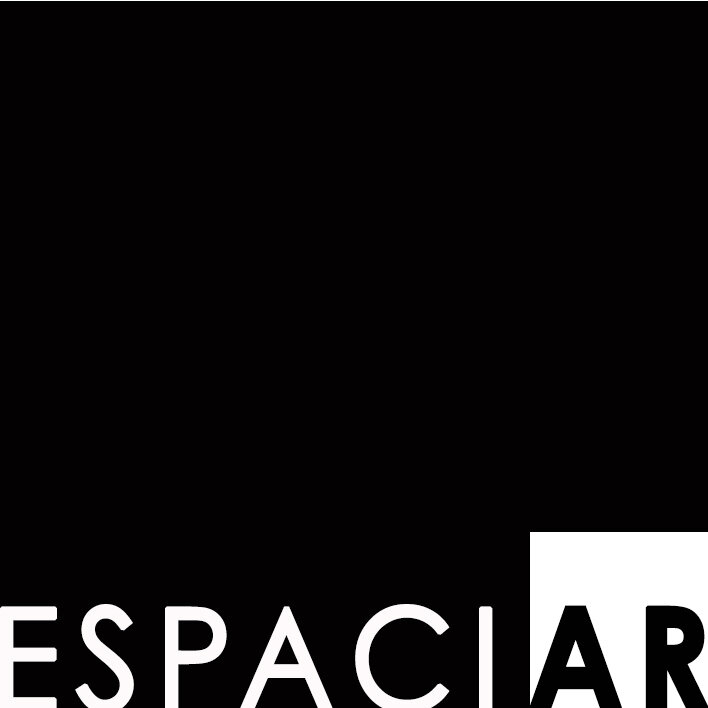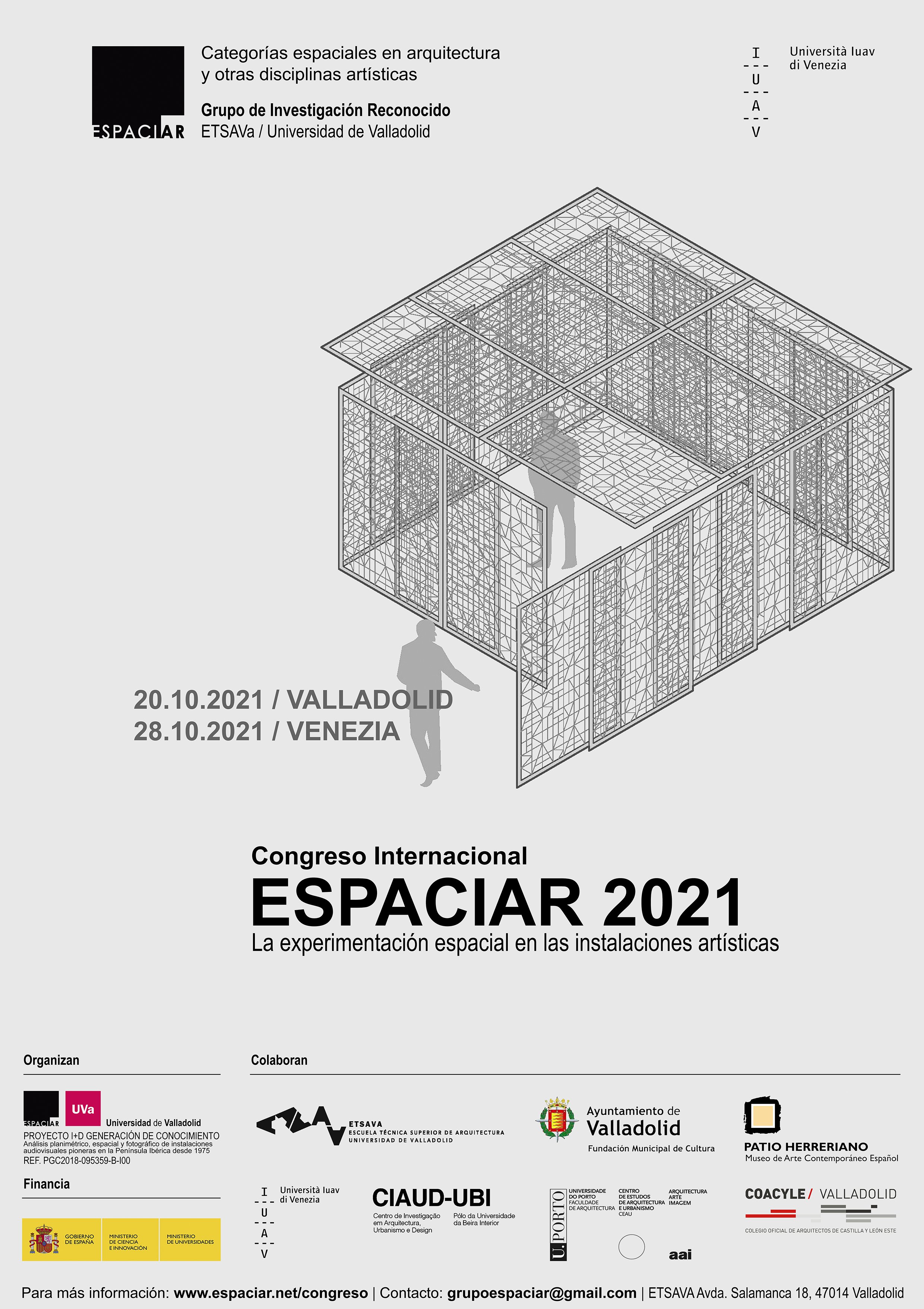Novedades! publicado el programa completo de las jornadas aquí
Novedades! conferencistas invitados
Se propone este encuentro académico y artístico para profundizar, desde lo arquitectónico, en el estudio de las abundantes categorías espaciales presentes en las instalaciones artísticas, un formato híbrido de carácter audiovisual, narrativo y escenográfico, constituido por el objeto en relación con su ámbito expositivo y el observador. La arquitectura como arte del espacio puede extraer precisas enseñanzas de las instalaciones, que son experimentaciones más ágiles, porque están menos sometidas a la normativa y la razón de uso propias de lo edificado. Parece oportuno abordar este trasvase de procedimientos mediante aproximaciones interdisciplinares de integración, interacción, interpretación o experiencia.
Algunas posibles líneas temáticas podrían ser: el poder relacional del vacío, el valor espacial de sombras, proyecciones y superposiciones, el espacio narrativo y fenomenológico, las arquitecturas efímeras, lo escenográfico, o la profundidad de la pantalla.
El congreso, coordinado por el Grupo de Investigación Reconocido (GIR) de la Universidad de Valladolid “ESPACIAR. Categorías espaciales en arte y arquitectura”, se enmarca en el Proyecto de Investigación del Programa Estatal I+D de Generación de Conocimiento 2018: “Análisis planimétrico, espacial y fotográfico de instalaciones audiovisuales pioneras en la Península Ibérica desde 1975”, ref. PGC2018-095359-B-I00, 2019-2021. Por ello se prestará especial atención a la singular presencia femenina en el mundo de las instalaciones artísticas. Interesan particularmente diversas creadoras del ámbito peninsular como Esther Ferrer, Cristina Iglesias, Eugènia Balcells, Elena Asins, Eulàlia Valldosera, Paloma Navares, Dora García, Esther Pizarro, Susy Gómez, Susana Solano, Teresa Braula Reis, Ângela Ferreira o Fernanda Fragateiro, entre otras.
La convocatoria se dirige, tanto al mundo académico, como al de la creación plástica, escénica o audiovisual. Tiene carácter internacional, con la presencia en su Comité Científico y en las ponencias invitadas de investigadores de Italia - IUAV de Venecia y Universitá di Udine - o Portugal - Universidade do Porto y Universidade da Beira Interior. También participan miembros de la Universidad de Zaragoza y del Máster en Arquitectura y Diseño de Interiores de la Universidad de Salamanca. Se propiciará la colaboración con diversas instituciones culturales y expositivas.
Podrán participar estudiantes de máster o doctorado y titulados en grado o máster de Bellas Artes, Arquitectura, Artes Escénicas o Audiovisuales, Gestión Cultural, Historia del Arte, Diseño de Interiores, etc. La participación en el Congreso es gratuita.
Las aportaciones podrán tener forma de trabajos escritos o de piezas artísticas interpretativas, pero buscarán referirse a cuestiones propias de la peculiar espacialidad de las instalaciones artísticas. Se publicará un libro de actas con ISBN, para el que se solicitará la oportuna indexación.
Habrá ponencias invitadas presenciales y ponencias ordinarias por mesas temáticas on-line, combinadas con actividades paralelas, como exposiciones, encuentros o talleres de trabajo e infantiles. Se intentará agrupar las ponencias recibidas en mesas por materias, presididas por expertos.
This meeting, both academic and artistic, is proposed to study in depth, from an architectural point of view, the abundant spatial categories present in artistic installations, a hybrid format of an audiovisual, narrative and scenographic nature, constituted by the object in relation to its exhibition space and the observer. Architecture as an art of space can extract precise lessons from the installations, which are more agile experiments, because they are less conditioned to regulations and building specific needs. It seems appropriate to approach this transfer of procedures through interdisciplinary approaches of integration, interaction, interpretation or experience.
Some possible thematic lines could be: the relational power of the void, spatial value of the shadows, projections and superpositions, the narrative and phenomenological space, ephemeral architectures, the scenographic act, or the depth of the screen.
The congress, coordinated by the Recognized Research Group (GIR) of the Valladolid University “ESPACIAR. Spatial categories in art and architecture ”, is part of the Research Project of the State R&D Program for the Generation of Knowledge 2018:“ Planimetric, spatial and photographic analysis of pioneering audiovisual installations in the Iberian Peninsula since 1975 ”, ref. PGC2018-095359-B-I00, 2019-2021. For this reason, special attention will be paid to the unique feminine presence in the world of artistic installations. Various creators from the peninsular area are particularly interesting, such as Esther Ferrer, Cristina Iglesias, Eugènia Balcells, Elena Asins, Eulàlia Valldosera, Paloma Navares, Dora García, Esther Pizarro, Susy Gómez, Susana Solano, Teresa Braula Reis, Ângela Ferreira or Fernanda Fragateiro, among others .
The call is directed, both to the academic world, as well as to the plastic, scenic or audiovisual creation. It is international in character, with the presence on its Scientific Committee and also in invited presentations by researchers from Italy - IUAV of Venice and Udine University - or Portugal – Porto University and Beira Interior University. Members of Zaragoza University and of the Master in Architecture and Interior Design of the University of Salamanca will also participate. Collaboration with various cultural and exhibition institutions will be encouraged.
Master's or PhD students and graduates of Fine Arts, Architecture, Performing or Audiovisual Arts, Cultural Management, Art History, Interior Design, etc. may also participate. Participation in the Congress is free.
Contributions may be in the form of written works or interpretive artistic projects/pieces, but they will seek to refer to issues of the peculiar spatiality of artistic installations. An ISBN minute book will be published, for which the appropriate indexing will be requested.
There will be face-to-face invited lectures and ordinary lectures by on-line thematic tables, combined with parallel activities, such as exhibitions, meetings or workshops for both attendants and children. An attempt will be made to group the papers received in tables by subject, chaired by experts.


![Cartel ESPACIAR [ES] 2-v2-A4.jpg](https://images.squarespace-cdn.com/content/v1/5ebd729873d81a41d6f98c72/1633619467460-0RBDGCHDDNESV5ELUO2S/Cartel+ESPACIAR+%5BES%5D+2-v2-A4.jpg)
![Cartel ESPACIAR [IT] 2-v2-A4.jpg](https://images.squarespace-cdn.com/content/v1/5ebd729873d81a41d6f98c72/1633619388674-0BCBA947YI8J41JJLA9H/Cartel+ESPACIAR+%5BIT%5D+2-v2-A4.jpg)

